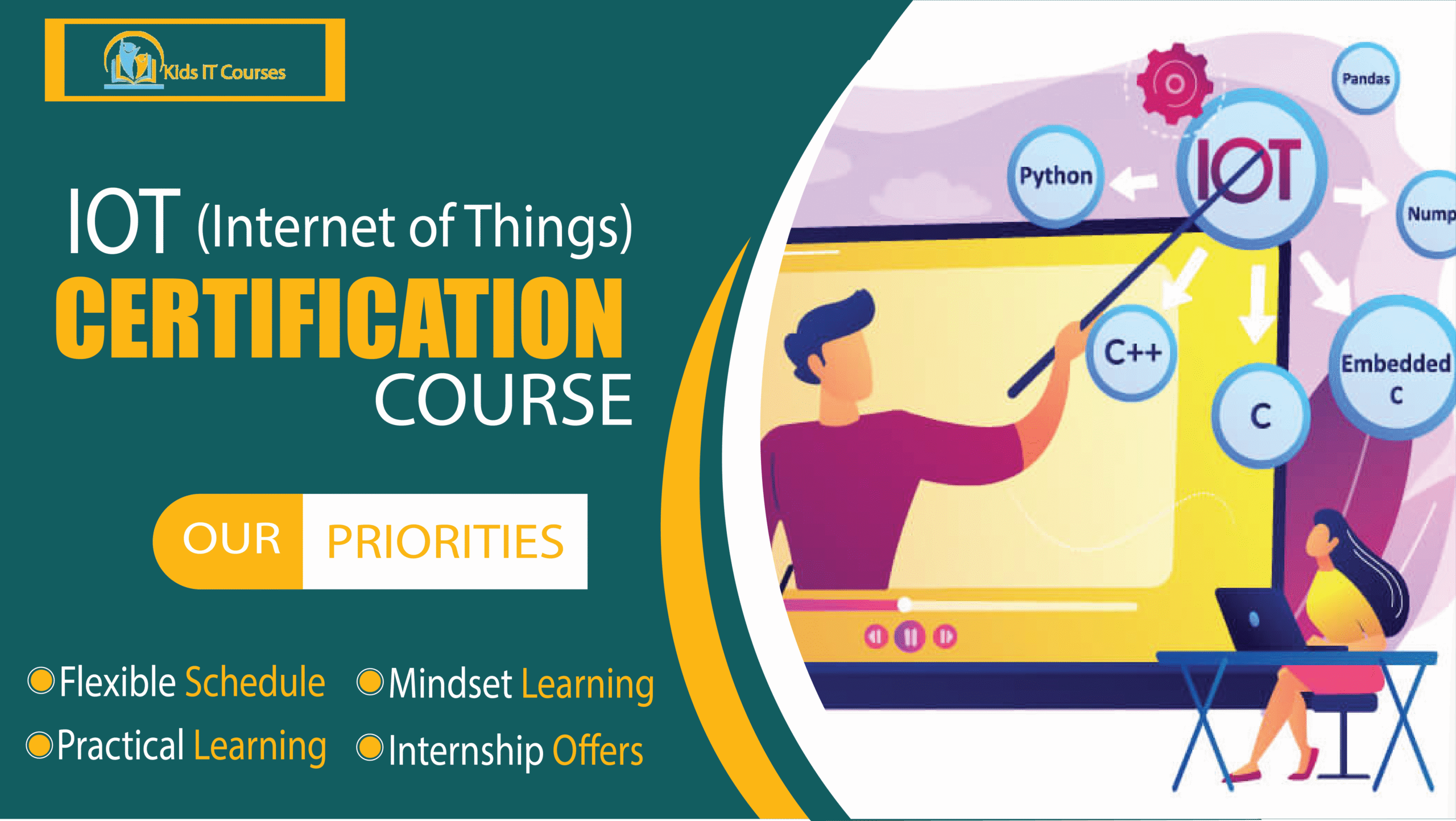
IOT Internet of Things Course for Kids
Definition
IoT means connecting everyday things to the internet. Like a smart bulb you can turn on with your phone!
Kids learn how devices send messages to each other. For example, a watch sending steps to a phone app.
They discover how to plan and control smart devices. This helps with logic and clear thinking.
- They build fun things like smart lights or alarms. It’s learning by doing!
Kids imagine new ways to use tech in daily life. It turns big ideas into real projects.
They understand how to keep connected devices safe. Security becomes a smart habit.
Importance
Kids learn how gadgets like smartwatches and home lights connect to the internet. They discover how everyday things “talk” to each other!
They learn how devices collect and send data. This builds step-by-step thinking and problem-solving skills.
Kids do fun projects with sensors and simple coding. They make their own smart tools, like alarms or temperature checkers.
They explore how IoT makes life easier—like smart traffic lights or weather alerts. It shows them the helpful side of tech.
Kids get to invent cool ideas using tech and imagination. It’s a fun way to turn big ideas into real things!
IoT is used in smart homes, health, farming, and more. Learning it now gives kids a head start in tomorrow’s world.
Advantages for IOT (Internet of Things)
Kids learn how gadgets like smartwatches and smart lights talk to each other. It helps them understand everyday tech in a fun way.
- Kids learn how gadgets like smartwatches and smart lights talk to each other. It helps them understand everyday tech in a fun way.
By creating smart projects, kids learn to solve problems step by step. It makes their thinking sharp and creative.
They play with sensors, buttons, and small devices. This helps them learn by doing, not just watching.
IoT is part of modern robots and smart machines. Learning it makes kids excited about future tech.
They collect data from sensors and use it to make decisions. This builds skills in logic and planning.
Smart tech is everywhere in today’s world. Starting now helps kids get ready for big opportunities later.
Session 1 : What is IoT?
- What does “Internet of Things” mean?
Everyday examples: smart bulbs, Alexa, wearables
How devices talk to each other
- Fun activity: Count IoT devices at home or school
Session 2 : Smart Sensors & Devices
- Types: temperature, light, motion, sound, humidity
- How sensors help in smart homes, cities, and farms
- Real example: Automatic lights turning on with motion
- Hands-on: Simulate sensors using interactive visuals or micro:bit (if available)
Session 3 : Connectivity – How Devices Talk
Wi-Fi, Bluetooth, and the internet basics
- Simple explanation of data packets
- Role of routers and cloud
Group activity: Kids act as “smart devices” passing info in a network relay game
Session 4 : Simple Smart System Demo
- Turn on LED with motion or temperature trigger
- Concept of input/output
- Real-world use: Smart alarm or fan system
No-code or block-code demo via simulation
Session 5 : Control IoT Devices Remotely
- What is remote control?
Smart home apps (turn on AC/lights with phone)
- Make a mock “smart home” dashboard on paper or digital tool
Activity: Design their own app screen for smart control
Session 6 : Data & Dashboards
Simple dashboards using spreadsheets or free tools
Visualize temperature or motion over time
Why dashboards help people make decisions
Build a mini dashboard to track classroom noise or temperature (real or simulated)
Session 7 : IoT Safety & Privacy
- What is data encryption?
Examples of risks (hacked cameras, weak passwords)
How to protect devices (strong passwords, updates)
Create a “Smart Device Safety Checklist” poster
Session 8 : Final Project – Design Your Own Smart System
- Brainstorm: Smart plant pot, pet feeder, alarm, or school bag
Sketch system components (sensor + action + control)
- Optional: Build on Tinkercad or paper prototype
- Present the idea to family or peers
Bonus Materials:
- Fun printable sheet for planning sensor-based gadgets
Real-life and imaginary IoT ideas to spark creativity
- Paper cutouts of sensors, devices, and networks to build tabletop projects
- Kids can log pretend sensor data and make graphs
- Customizable completion certificate for your young IoT innovator
